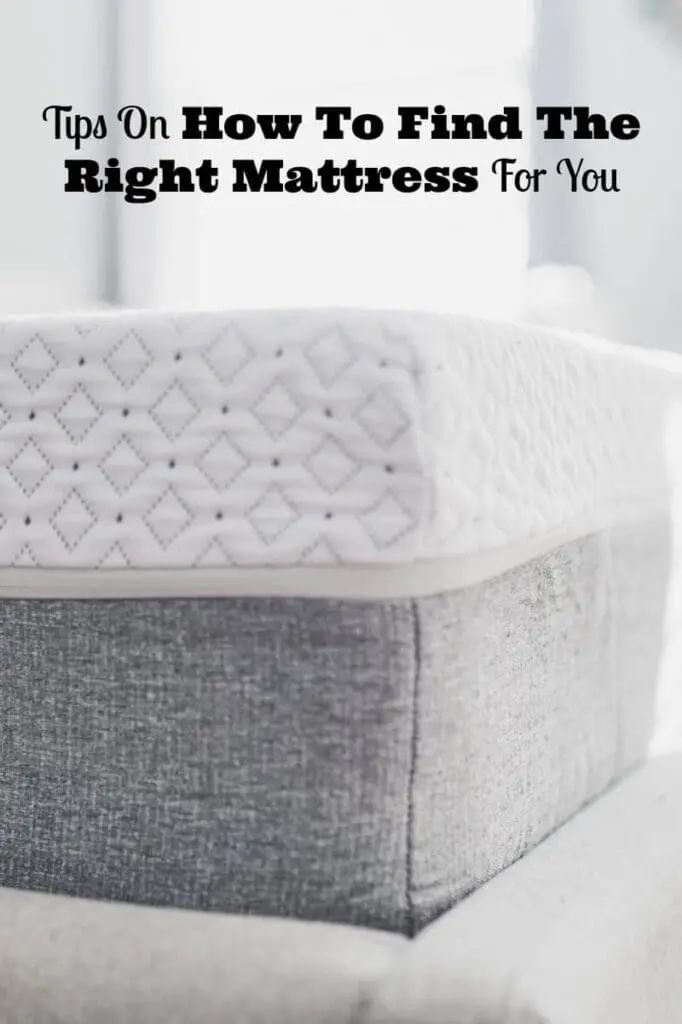Selecting the right mattress size is pivotal for a comfortable night’s sleep. Whether you’re updating your bedroom with a new mattress or simply curious about what size would work best for you, understanding the dimensions and how they relate to your space is crucial. The best mattress optimizes sleep quality, fits your room comfortably, and accommodates your lifestyle needs. This article will share everything you need to know for how to find the right mattress.
When embarking on mattress shopping, several important factors must be considered to ensure you make the best choice. It’s about finding the perfect mattress regarding material or firmness and how it fits into your livable space. Balancing personal comfort with the actual dimensions of your bedroom can make a dramatic difference in your overall satisfaction.
While browsing mattress stores, think about your current sleeping situation. Are you cramped for space, rolling into the middle, or perhaps sleeping alone in a too large bed? These experiences are telling signs that you need to reshape your sleeping environment. For those choosing a mattress size in the UK, taking precise measurements of the room before buying a mattress is a step you cannot overlook. Ensuring your new bed fits your room perfectly is as important as the mattress supporting you night after night.

Determining the Right Mattress Size and Type
Selecting the right mattress size and type is essential for optimizing your sleep quality. The first factor to consider for how to find the right mattress is to ensure the bed fits well within your room.
Assess Room Dimensions and Space
Before deciding on a bed, measure your room to determine the maximum mattress size that will comfortably fit. Remember that there should be enough space around the bed to move freely. Also consider how your placement will relate to doors and windows within the room. A twin bed or twin XL may suffice for single sleepers, offering ample length for taller individuals. Couples might consider a queen, king, or California king bed, with king and California king offering the most space, especially important if sharing with children or pets. It’s crucial to compare the dimensions of the mattress with the room size to ensure a good fit.
Room Size Guidelines for Bed Sizes:
- Twin/Twin XL: Ideal for small rooms or studio apartments. (38″ x 75″ and 38″ x 80″)
- Full/Queen: Suitable for guest rooms or smaller master bedrooms. (54″ x 75″ and 60″ x 80″)
- King/California King: Requires larger spaces for an elegant fit. (76″ x 80″ and 72″ x 84″)

Choose the Appropriate Mattress Type for Your Sleep Style
Your mattress should support your preferred sleep position and comfort preferences. Here’s a quick guide for how to find the right mattress when it comes to selecting from mattress types:
- Foam: Contours to your body, providing pressure relief—Ideal for side sleepers.
- Innerspring: Offers a firmer feel with a bounce—Good for back sleepers who require extra lumbar support.
- Hybrid: Combines foam and innerspring benefits—A versatile choice for couples with different sleeping styles.
- Latex: Known for durability and a natural bounce—Great for sleepers looking for an eco-friendly option.
Think about if you are sleeping alone or with a partner. A queen-size mattress is a comfortable option for two sleepers, providing space to move without disturbing each other. Remember, the right mattress promotes not just comfort, but also the overall quality of your sleep. Consider both size and material to enhance your rest.
Weighing Comfort, Quality, and Budget
When choosing the right mattress size, it’s vital to balance your need for comfort, the quality of the mattress, and how it fits into your budget.
Selecting a Mattress Based on Material and Firmness
The material of a mattress greatly affects its comfort and durability. Foam mattresses offer contouring support which is beneficial for side sleepers experiencing hip or shoulder pain. They come in different types of foam, such as memory foam, known for its pressure relief and motion isolation. However, they can retain heat, so look for options with cooling technology if you tend to sleep hot.
On the other hand, an innerspring mattress is typically more budget-friendly and offers a bouncier feel with better air circulation. A hybrid mattress combines foam and innersprings, delivering both support and comfort, and can be a versatile choice.
Latex mattresses are durable and natural, which could be a priority if you have allergies or prefer eco-friendly products. They provide a resilient feel and are available in synthetic or natural forms.
Mattress firmness is a subjective measure and relates closely to comfort and support. A medium-firm mattress is often recommended for the right balance, especially for back sleepers, as it maintains spinal alignment while softening the pressure on the lower back.
- Firm mattress: better for stomach sleepers, heavier individuals, or those with back pain requiring firmer spinal support.
- Softer mattress: ideal for side sleepers who need extra cushioning for the shoulders and hips.
Prices will vary across the type of mattress, with latex and hybrids typically on the higher end, so factor in mattress price when comparing the benefits against your budget.

Matching Mattress to Sleeping Positions and Health Needs
Your sleeping position and any health concerns should also influence your mattress selection. Here’s a quick guide to picking the best mattress for your preferred sleeping position:
- Side sleepers: A softer mattress or a plush top layer will cushion shoulders and hips, enhancing comfort and preventing pain.
- Back sleepers: Look for a balance of support and softness to maintain spinal alignment without causing lower back pain.
- Stomach sleepers: Required is a firmer surface to keep the body flat and prevent the spine from arching.
- Combination sleepers: Medium-firm or mattresses with good balance aid easy movement and support different positions.
- Back pain sufferers: Firmness levels should be matched to personal preference, but a mattress that contours and supports the spine is crucial.
Consider trying out mattresses or using trial periods many companies offer to test for comfort and support for your body type. Features such as motion isolation for those with a partner or adjustable air chambers for customizable firmness can also be important. I always consider customer reviews as well. Be sure to look at the number of ratings, not just the rating itself.
In conclusion, when weighing options, ensure your mattress of choice offers the best combination of the necessary support, maximizes comfort for your typical sleeping position, and fits your budget constraints without compromising on quality and durability.
Conclusion
Choosing the right mattress comes down to understanding your personal sleep needs and preferences. Consider factors like your preferred sleep position, firmness level, body type, and any health concerns such as back pain or allergies. Take time to test different options in-store or take advantage of sleep trials offered by many online retailers. Remember, a quality mattress is an investment in better sleep and overall well-being, so prioritize comfort, support, and durability to find the perfect fit for a restful night’s sleep.
Your perfect mattress size hinges on various personal factors, such as your height, sleeping habits, available space, and whether you share the bed. Always consider these elements before making a decision. Remember, the right mattress will fit your room well and support a good night’s sleep.
Related Posts:
DIY Cedarwood Lavender Sleep Roller Blend

Sravan says
I am looking for the best mattresses with proper support for my back and medical conditions. Thanks for the tips on what I need to know before I go online shopping and order one.
Rex says
It was helpful to know the different types of mattresses so I can meet my individual needs and firmness level. Really this blog is very awesome. I like all pictures have you add in this blog too.
Randy says
Thanks for explaining the difference between memory foam mattresses and hybrid mattresses. It helped me pick a good mattress for my specific needs and body weight.
YASIR AUSAF says
My sleep just did a victory dance thanks to this amazing blog! You demystified mattress types and nailed the firmness factor. Those visuals added the perfect touch – I can practically feel the comfort already!